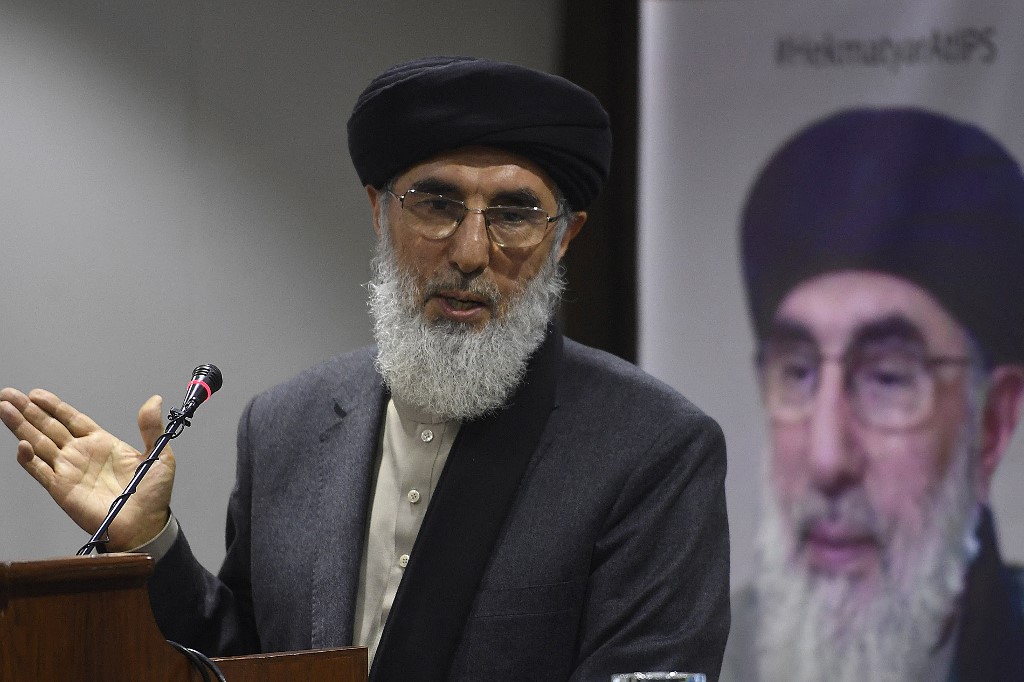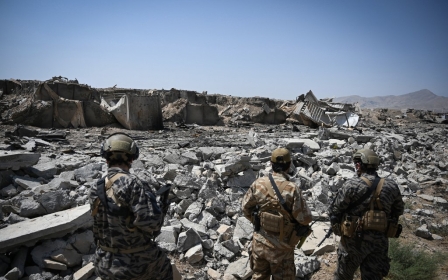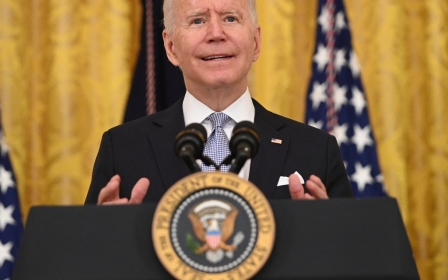A stable Afghanistan is a huge win for China. That's why the US won't allow it

Taliban spokesman Zabihullah Mujahid last week announced that China would be the new Afghan government’s “most important partner and represents a fundamental and extraordinary opportunity for us… China is our pass to markets all over the world”.
Coming hot on the heels of Taliban co-founder Mullah Abdul Ghani Baradar’s visit to China in late July, such statements have been taken by many observers as confirmation that China is the unequivocal strategic victor of recent events. China’s apparent alliance with the new Taliban government will, it is claimed, ensure it can consolidate its economic dominance through Afghanistan’s full integration into the Belt and Road Initiative (BRI), position itself as regional security guarantor and start to exploit Afghanistan’s estimated $1tn worth of untapped mineral resources.
China’s Belt and Road Initiative has long envisaged Afghanistan as a vital component of its grand vision of a New Silk Road
Certainly, the combination of a friendly Afghan government and an end to the country’s near half-century of war will be of enormous benefit to China. China’s BRI has long envisaged Afghanistan as a vital component of its grand vision of a New Silk Road, providing high-speed connectivity across the entire Eurasian landmass and into Africa.
Involving hundreds of billions of dollars of infrastructure investment in low-income countries, the project is perhaps the most ambitious project of global south-south economic cooperation ever imagined, with the potential to free the south from its neocolonial dependence on western markets, finance and distribution networks once and for all.
And for China, it holds the dazzling prospect of ending the country’s dependence on seaborne trade - trade that is at the mercy of the US Navy’s control of the world’s key "choke-points" - allowing it to import its energy needs and export its goods without a shipping container in sight, neutralising perhaps the last remaining element of US preponderance at a stroke.
New MEE newsletter: Jerusalem Dispatch
Sign up to get the latest insights and analysis on Israel-Palestine, alongside Turkey Unpacked and other MEE newsletters
'Afghan connectivity'
And Afghanistan - the gateway between Central Asia and South Asia - is fundamental to the realisation of this vision. “Without Afghan connectivity,” said the Chinese ambassador to Afghanistan in 2016, “there is no way to connect China with the rest of the world.”
But it is precisely because a peaceful Afghanistan has such potential for global south integration that it cannot be tolerated by the US.
“We may expect that the CIA will try to stand up an Afghan counter-insurgency [sic] to the new government,” wrote Alastair Crooke, former MI6 liaison officer to the Mujahideen. While the Asia Times noted that “an unstable Afghanistan that exports terror threats to strategic rivals Russia, China and Iran is actually in Washington’s geopolitical interest”.
Given the current US National Defense Strategy’s brazen admission that “interstate strategic competition, not terrorism, is now the primary concern in US national security”, and its commitment to “forcing” competitors “to confront conflict under adverse conditions”, such worries seem sadly well placed.
But can the US and its sidekick Britain actually keep the desired war going now that its troops have vacated the region? Broadly speaking, there are three major potential "spoilers" for a peaceful, stable Afghan future, all of which have historical links to western special forces.
Most obvious is Isis-K, the Islamic State group's offshoot whose 26 August attack on Kabul airport offered a glimpse of a possible future depressingly like the horrific past. Noted Pepe Escobar in the Asia Times: “It's no secret among intel circles in Eurasia that Isis-K has become disproportionately more powerful since 2020 because of a transportation ratline from Idlib, Syria to eastern Afghanistan …[for which] Moscow and Tehran, even at very high diplomatic levels, have squarely blamed the US-UK axis as the key facilitators.”
Up to 10,000 jihadi fighters have entered the country in recent months, according to the New York Times, including forces “allied with Isis-K, presenting a major challenge to the stability and security the Taliban promise to provide for the country”.
Warlords
Secondly, there are Afghanistan’s notorious "warlords", many of them veterans of the anti-Soviet war of the 1980s. Some of the most powerful include Ahmad Massoud, son of the MI6 favourite Ahmad Shah Massoud; war criminal and CIA asset Abdul Rashid Dostum; and the corrupt and fabulously wealthy Atta Mohammad Noor, whose son is a recent graduate of Sandhurst military academy. Until earlier this year, all of these men controlled substantial militias and territories. However, as the Taliban swept all before them, they increasingly seemed like a busted flush, and have all now fled the country.
The country’s erstwhile most dangerous warlord, however, Gulbuddin Hekmatyar, may still have cards to play. A leading recipient of CIA and British support in the 1980s who personally threw acid in a woman’s face and once met Margaret Thatcher, he was “famed for skinning infidels alive” and went on to mercilessly bombard Kabul in 1992 following his exclusion from the city’s conquering armies. He has been deeply involved in negotiations with the Taliban, and may yet be able to stir up trouble if things do not go his way, especially given his links to the other powerful political figures left out of the Taliban government following negotiations, Hamid Karzai and Abdullah Abdullah.
Finally, there is the potential for opposition from within the Taliban’s own ranks. The Taliban leadership has been keen to present a scrubbed image to the world, emphasising its commitments to counter-terrorism, girls' education and “inclusive government”, as well as its commitment to friendly relations with China.
Discontent is likely to grow as social conditions worsen. The US has frozen the entirety of Afghanistan’s $9.5bn central bank reserves
Yet power now lies with the fighters, not the political spokesmen, and their acceptance of this new agenda is far from assured. Signs of dissent emerged during the negotiations over the composition of the government, when Mullah Mohammad Yaqoob - the well-respected son of Taliban founder Mullah Omar and head of a huge network of field commanders - “let it leak that those ‘living in luxury in Doha’ cannot dictate terms” to the fighters.
Discontent is likely to grow as social conditions worsen. The US has frozen the entirety of Afghanistan’s $9.5bn central bank reserves, and the IMF has cancelled its lending to the country, leaving the new government unable to pay the salaries of government officials or for imports. Any hint that Kabul is succumbing to pressure from the West to impose an alien liberalism is also likely to drive a wedge between the leadership and the rank-and-file.
This could all prove fertile soil for recruitment among demoralised fighters by Isis-K or reconstituted warlord militias. Whether Chinese largesse can plug the gap in finances quickly enough to avert a humanitarian disaster, with all its political consequences, remains to be seen.
What is clear is that the West’s policies thus far appear tailor-made to foment division.
The views expressed in this article belong to the author and do not necessarily reflect the editorial policy of Middle East Eye.
Middle East Eye delivers independent and unrivalled coverage and analysis of the Middle East, North Africa and beyond. To learn more about republishing this content and the associated fees, please fill out this form. More about MEE can be found here.







